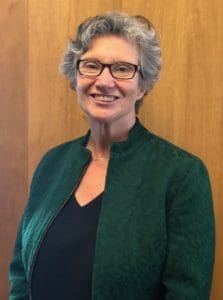 I’ve been watching the little finches earnestly tear out the fibers of the hanging baskets on my balcony. The mama finches pick and pull at the basket until she has a collection of long threads hanging out of her beak like a moustache.
I’ve been watching the little finches earnestly tear out the fibers of the hanging baskets on my balcony. The mama finches pick and pull at the basket until she has a collection of long threads hanging out of her beak like a moustache.
The daddy finches hang out by the bird bath like it is a bar, taking sips while watching the females work and looking around for danger. They fly off together to their nest-building sites under the awnings across the street or in the treetops in the alleyway.
Home is where your nest is. While the little birds in my neighborhood have been successful in finding a match and a place to build a home for the baby birds that are coming, many of the adults in my community have not been so fortunate.
The other day I overheard someone say that all people can talk about right now is “housing.”
This is true. 2022 is the year of writing housing plans (AKA Housing Elements) in the Bay Area. This year, every county, city and town has to write a plan for new housing. (This requirement has been around for over 30 years now because California has had a housing crisis for that long, at least.)
People are talking about housing needs, affordable housing sites, housing policies, and funding for housing. Soon, we will be talking about environmental review, public hearings and State certification. And by the end of the year, the plans will be adopted and we will talking about whether or not the housing plans are resulting in any new housing.
In Marin County, we have a tragic mismatch between our housing supply, our current demographics and our local economy.
Much of our housing is in single family homes, most of them built after World War II, spread throughout the neighborhoods of Marin. These are fabulous places to raise a family, with places for backyard play and family barbecues.
Some of the housing is in apartments, which are typically smaller affordable places for one or two people to live in. However, because there aren’t enough apartments in Marin and because rents are high as a result, many local workers share their apartments with extended families or other roommates. There are simply not enough apartments to meet the needs of the tens of thousands of commuters coming to work in the shops, schools, offices and homes of Marin. We don’t even have enough new housing for the hundreds of 18 year olds graduating from high school every year! So little new housing has been built, that we export our young adults off to college elsewhere in the nation.
The demographic challenge is that as children grow and leave the nest, the home becomes a too-large place at some point. Homeowners have options: they can move out of Marin, they can rent out a room or add an accessory dwelling unit to rent out, they can retrofit their home to accommodate their changing abilities, or they can search for a smaller place to live in their hometown. This last option is not quite viable, as there are no places to downsize into either in their downtown or city because so little new housing has been built. Thus, we have thousands of homeowners aging into their 70s, 80s and 90s in their single-family homes across the hills and valleys of Marin.
The last challenge is our local economy. Our cities and towns rely on sales taxes to pay for public services (police, fire, library, recreation). With a population that is long-settled into their homes and no new housing, there is no room in Marin for young families and those local high school graduates. Our economy can only be as robust as the amount of housing choices available for current AND future residents. Having lived through the financial stress of several economic downturns, I can testify that a humming economy is far better for everyone than a stagnant economy.
So what can we in the Aging Action Initiative do about this conundrum? We can speak up about housing!
First, I invite you to find out about the status of your local housing element. Check your town’s website for ‘housing element 2023’ to learn about community oversight and ways to have input to the planning. Find out when the public meetings are, and make plans now to attend the public hearings in the summer or fall.
Second, read the draft ‘Needs Assessment’ – a required analysis in every housing plan. There is one section to pay special attention to, all about ‘seniors.’ Every jurisdiction must document the housing needs of its older residents. Is the Senior Needs Assessment accurate for your town? Are the conclusions appropriate in identifying not just today’s needs, but those of people aging into their 80s, 90s and 100s? Let your local planner know in a friendly email if this section needs more information or analysis!
Third, be ready to think positively about ‘housing sites.’ Every jurisdiction must identify those places where housing could be built. Because much of Marin is protected open space or already built on, we are challenged to think beyond single-family homes and apartments on vacant land. Parking lots, shopping centers, public lands, faith properties, and downtowns are all places that can accommodate new buildings with housing. We also have to think about buildings taller than one or two stories. Marin’s downtowns are full of examples of slightly taller buildings, so we can do this!
Finally, make sure that the policies in the Housing Elements are going to help the older people living in your town. Here is a list of ideas to consider bringing up to your local housing planner. Each town, city and County community is different. The needs are different and the solutions are unique. Take a look at this list, and see which ones you will promote to your local housing planner:
•Changing zoning on commercial properties to allow apartments
•Encourage senior housing (residential care facilities, assisted living, memory care)
•Encourage housing for extremely-low income households, such as solo renters living on social security
•Adopt an age-friendly building code (like Petaluma)
•Provide feasibility support to help older homeowners rent out a room or create a junior accessory dwelling unit (some older homeowners could use help to clear out a lifetime of accumulation)
•Adopt tiny house building code regulations
•Require a certain percentage of all units be affordable
•Adopt renter relocation assistance when a property is redeveloped
•Adopt appropriate limitations on vacation rentals
•Establish a reasonable rent stabilization program
•Collaborate with Marin Housing Authority to promote housing vouchers for lower income households
•Fund a Homeshare program (like Mill Valley)
•Provide building permit grants to facilitate home accessibility modifications (like Sausalito)
•Publicize how to avoid fraud of homeowners
•Remove density limits (decide the height and mass, and let the builder determine the number of units (like downtown San Rafael)
•Train staff to communicate with people with cognitive issues such as dementia (for code enforcement)
The goal with housing is to have a balance, with room for young singles, for families, and for older people. We want to have lovable neighborhoods with people of all ages and all abilities, to live safely in community with each other. With your help, AAI can be part of making this vision a reality.

